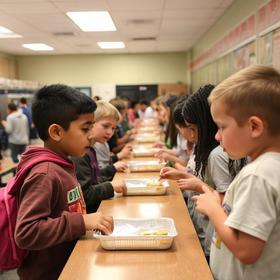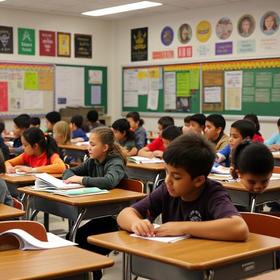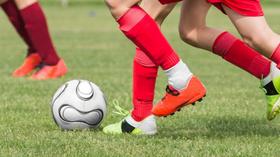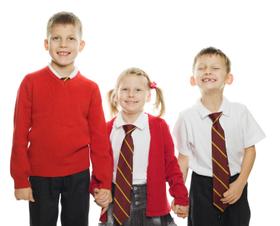For the 2025-26 school year, there are 2 public schools serving 388 students in Chase County School District. This district's average testing ranking is 5/10, which is in the bottom 50% of public schools in Kansas.
Public Schools in Chase County School District have an average math proficiency score of 25% (versus the Kansas public school average of 31%), and reading proficiency score of 34% (versus the 33% statewide average).
Minority enrollment is 12% of the student body (majority Hispanic), which is less than the Kansas public school average of 39% (majority Hispanic).
Overview
This School District
This State (KS)
# Schools
2 Schools
1,339 Schools
# Students
388 Students
477,624 Students
# Teachers
31 Teachers
33,417 Teachers
Student-Teacher Ratio
13:1
13:1
Student By Grade
District Rank
Chase County School District, which is ranked within the bottom 50% of all 286 school districts in Kansas (based off of combined math and reading proficiency testing data) for the 2022-2023 school year.
The school district's graduation rate of 80% has decreased from 90% over five school years.
Overall District Rank
#170 out of 286 school districts
(Bottom 50%)
(Bottom 50%)
Math Test Scores (% Proficient)
25%
31%
Reading/Language Arts Test Scores (% Proficient)
30-34%
32%
Science Test Scores (% Proficient)
35-39%
31%
Graduation Rate
(21-22)≥80%
89%
Students by Ethnicity:
Diversity Score
0.23
0.57
% American Indian
n/a
1%
% Asian
n/a
3%
% Hispanic
8%
22%
% Black
n/a
7%
% White
88%
61%
% Hawaiian
n/a
n/a
% Two or more races
4%
6%
All Ethnic Groups
District Revenue and Spending
The revenue/student of $17,990 is higher than the state median of $16,276. The school district revenue/student has declined by 6% over four school years.
The school district's spending/student of $17,023 is less than the state median of $17,192. The school district spending/student has declined by 6% over four school years.
Total Revenue
$7 MM
$7,774 MM
Spending
$7 MM
$8,211 MM
Revenue / Student
$17,990
$16,276
Spending / Student
$17,023
$17,192
Best Chase County School District Public Schools (2025-26)
School
(Math and Reading Proficiency)
(Math and Reading Proficiency)
Location
Quick Facts
Rank: #11.
Chase County Elementary School
(Math: 25-29% | Reading: 40-44%)
Rank:
Rank:
6/
Top 50%10
410 Palmer
Strong City, KS 66869
(620) 273-6676
Strong City, KS 66869
(620) 273-6676
Gr: PK-6 | 218 students Student-teacher ratio: 14:1 Minority enrollment: 16%
Rank: #22.
Chase County Junior Senior High School
(Math: 20-24% | Reading: 20-24%)
Rank:
Rank:
3/
Bottom 50%10
600 Main Street
Cottonwood Falls, KS 66845
(620) 273-6354
Cottonwood Falls, KS 66845
(620) 273-6354
Gr: 7-12 | 170 students Student-teacher ratio: 11:1 Minority enrollment: 7%
Frequently Asked Questions
How many schools belong to Chase County School District?
Chase County School District manages 2 public schools serving 388 students.
What is the rank of Chase County School District?
Chase County School District is ranked #170 out of 286 school districts in Kansas (bottom 50%) based off of combined math and reading proficiency testing data for the 2022-2023 school year.
What is the racial composition of students in Chase County School District?
88% of Chase County School District students are White, 8% of students are Hispanic, and 4% of students are Two or more races.
What is the student/teacher ratio of Chase County School District?
Chase County School District has a student/teacher ratio of 13:1, which is lower than the Kansas state average of 14:1.
What is Chase County School District's spending/student ratio?
The school district's spending/student of $17,023 is less than the state median of $17,192. The school district spending/student has declined by 6% over four school years.
Recent Articles

How Public Schools Support Students on Free / Reduced-Lunch Programs
Explore how U.S. public schools support students eligible for free or reduced-price lunch through nutrition, academic, and wraparound services in 2025.

Hidden Costs of Public Schools: Fees, Supplies & Extras
Explore the hidden costs in public schools—fees, supplies, extracurriculars—and how parents can plan for them in 2025.

Public School Funding 2025: What Families Should Know
Essential insights on public school funding in 2025—how it works, what’s changing, and what families should know to stay ahead.





